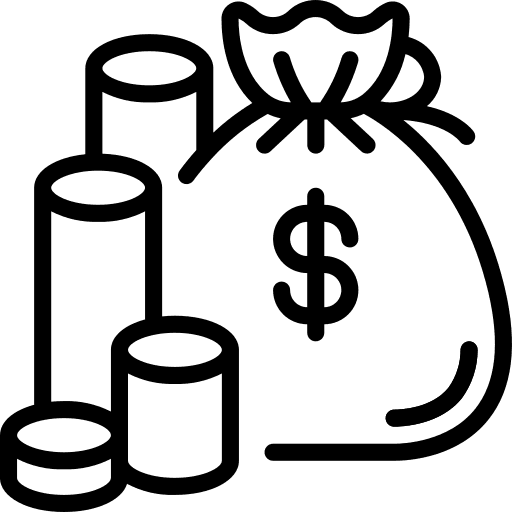Interest-only investing in a booming market
Some savvy investors buy a property in a booming market and then hold onto it for just a few years. While the property grows in value, they just pay off the loan interest and use it to reduce their tax bill. They also earn rent, which they might put into an offset account or save elsewhere.
But they never repay the loan. Instead, they stick with interest-only repayments and then sell the property for a higher price.
This doesn't work when property prices aren't growing fast and is obviously a pretty risky investment strategy.







We are paying 10% on a 250k interest only loan to a private financier on our rural property. We would like a better cheaper option. Pls contact me with a better solution.
Hi Colin,
You can compare lenders listed on this page that offer better rates. It may also be worthwhile consulting a mortgage broker to talk through your specific needs and help match you up to a lender that suits your circumstances.
Kind regards,
Rebecca
Hello Colin,
In a situation like yours, you might need to speak to a local mortgage broker. They can help you find a suitable rural loan if you can’t find anything yourself.
I hope this helps.
Richard
How likely is it that our lender would consider interest only on our mortgage which is 5.4% interest and we are finding it difficult to pay the high repayments and/or reduce the rate to a more reasonable rate? Would a mortgage moratorium be useful to us as we will need some breathing space before we sell if rates could not be negotiated down?
Hi Alan,
Thank you for getting in touch with Finder.
Since the moratorium is a grace period of sorts after the loan amount has been disbursed to the borrower, I suggest that you discuss your possible options with your current lender. Now, if you’re unhappy with what they’ve provided, please seek help from a mortgage broker for your other options.
I hope this helps.
Thank you and have a wonderful day!
Cheers,
Jeni
I have a interest only loan on an investment property. The bank wants now to revert to interest and principle. This doesn’t suit me. I would like to refinance to an interest only loan with an off-set account or redraw facility.
Hi Samuel,
Thanks for getting in touch.
I’m sorry to hear about the change in your home loan. If the principal and interest type of loan does not suit you, best to communicate this with your lender so they can offer other options for you. In case they will insist on the P&I on your mortgage, you can go ahead and refinance. There are home loan refinancing options you can choose from. Brands listed on the page also offer P&I, but of course, you can contact the lender first to discuss your option for interest-only with offset and redraw facility.
Alternatively, best to speak to a mortgage broker who can consider your circumstance and offer you a wide range of refinancing options.
Hope this has helped.
Cheers,
May
i want interest only as later lookin at selling and buying retirement villa house worth 750 or so hsve 150 mortgage 1 credit card maxed to 2thousamd and 1 6 tjousand who can help me find interest only home loan in wa
Hi Marisha,
Thanks for getting in touch with finder. I hope all is well with you. :)
We do have a list of interest-only home loans on this page. Check the table above and compare your options. Once you found the right for you, click on the “Go to site” green button. Please review the criteria, details of the loan product, and its conditions, then contact the lender directly to discuss your loan options and eligibility. These providers should be able to help you even if you live in WA.
I hope this helps. Should you have further questions, please don’t hesitate to reach us out again.
Have a wonderful day!
Cheers,
Joshua
What is your best investment comparison rate interest only for loan of 1.14 million thanks
Hi Marc,
Thanks for your inquiry.
You may refer to our interest-only investment loans comparison table to compare and view the rates of different lenders. Simply enter the $1,140,000 next to the borrowing about followed by your loan term then press “Calculate”.
You may then compare each lender based on their interest rate p.a., comp rate p.a, fees, maximum LVR, and your projected monthly repayment. If you like to see the side-by-side comparison between brands, just click the “compare box” below the brand’s logo.
Please click the name of the lender or the “More info” link to be redirected to our review page and learn more about the lender’s loan offer, rates, and requirements as well as the pros and cons of using their loan service. When you are ready, you may then click on the “Go to site” button and you will be redirected to the lender’s website where you can proceed with the application or get in touch with their representatives for further inquiries you may have.
Before applying, please ensure that you meet all the eligibility criteria and read through the details of the needed requirements as well as the relevant Product Disclosure Statements/Terms and Conditions when comparing your options before making a decision on whether it is right for you. You can also contact the provider if you have specific questions. Alternatively, you can speak to a mortgage broker who can take your personal circumstance into account and offer you a range of borrowing options.
Cheers,
Rench